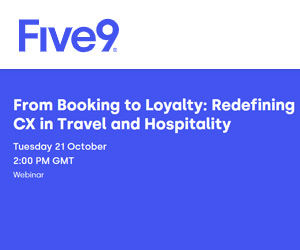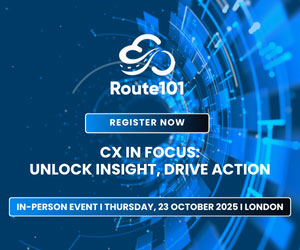IQPC share three tips for creating better, more natural contact centre conversations.
Since Amazon purchased audio entertainment brand Audible in 2008, it has become a staple feature in the lives of many consumers.
Initially offering narrated versions of popular books, the company now sells and produces radio and TV programmes as well as audio versions of magazines and newspapers.
As an Amazon company, customer obsession sits at Audible’s core and, in a recent interview with Tom Vickers, Audible’s UK Customer Services Manager, IQPC uncovered just how the organization is ensuring that this is reflected through interactions created by their frontline agents.
Of the factors that contribute to a memorable customer experience, Tom highlights natural human interactions as playing an essential role in how Audible sets itself apart from the competition.
Here, we share a snippet of the insight Tom provided, with three actionable tips for making natural, humanistic interactions a reality in your customer contact organization.
1. Trust Your Agents
No customer is the same as any other. While they may contact a service agent to resolve a common issue, this does not mean that each customer should be offered the same remedy.
As demonstrated in Tom’s interview with us, some customers may simply want to request and receive an audiobook return and hang up the phone, while others may like to hear recommendations for their next Audible download.
Identifying the best approach to service for each customer requires the agent to use their own emotional intelligence and experience, as opposed to following a strict procedural outline.
As Tom explains, the company’s intention is to build relationships and use the emotional intelligence of their agents as a differentiator between them and their competitors.
In order to do this, trust between senior management and frontline agents is essential. In an ideal scenario, there should be a certain level of confidence in the agent’s ability to identify the right solution for the customer they are serving.
“If you throw too much policy at agents purely to make sure that they’re toeing the corporate line, their interactions become a little bit staler and forced,” says Tom.
“Trust them to know what they’re doing and to find the right solution for the customer.”
2. Ignore Traditional KPIs
In line with establishing an element of trust, Tom also encourages a move away from traditional KPIs.
It is his belief that customer service organizations should “look at the customer service experience more subjectively, focus on personality traits rather than box ticking.”
While many organizations focus on the quantity aspect of the interaction, putting limits on handle times or setting a target quota for agents to hit every day, Audible is focused primarily on quality.
As Tom explains: “We’re trying to measure empathy. We’re asking: did the agent make the most of their opportunities?”
The ultimate goal for Audible is to find a way to quantify this approach to service in order to make it a more measurable metric of success.
In the meantime, there is a strong understanding that when agents know that they are being assessed on factors that are less about jumping through a hoop and more about showing empathy, the interactions they create are much more natural.
This, in turn, Tom explains, encourages them “to work on building themselves as conversationalists rather than box tickers.”
3. Focus on Who You Hire
In order to ensure that an organization can offer a more conversational service experience when customers call their centres, it is essential that the agents they hire are naturally inclined to create this.
Achieving this requires that a) the agent is a conversationalist and b) the agent is able to converse about the category of the product they are providing customer service for.
“There may be someone who is obsessed with literature but can’t explain why they like it,” explains Tom. “So we really focus on people that are conversationalists.”
Those who are natural communicators don’t necessarily need to be an expert in your company’s subject area, (i.e. books in Audible’s case), but it does help if they have some enthusiasm for a related field (i.e. other types of entertainment such as TV or film).
In designing the best process for hiring, Tom recommends that managers focus on the type of interaction that they want to create and then hire people that have a natural inclination to create that.
Author: Robyn Coppell
Published On: 9th Aug 2019 - Last modified: 20th Jan 2023
Read more about - Archived Content, IQPC




































